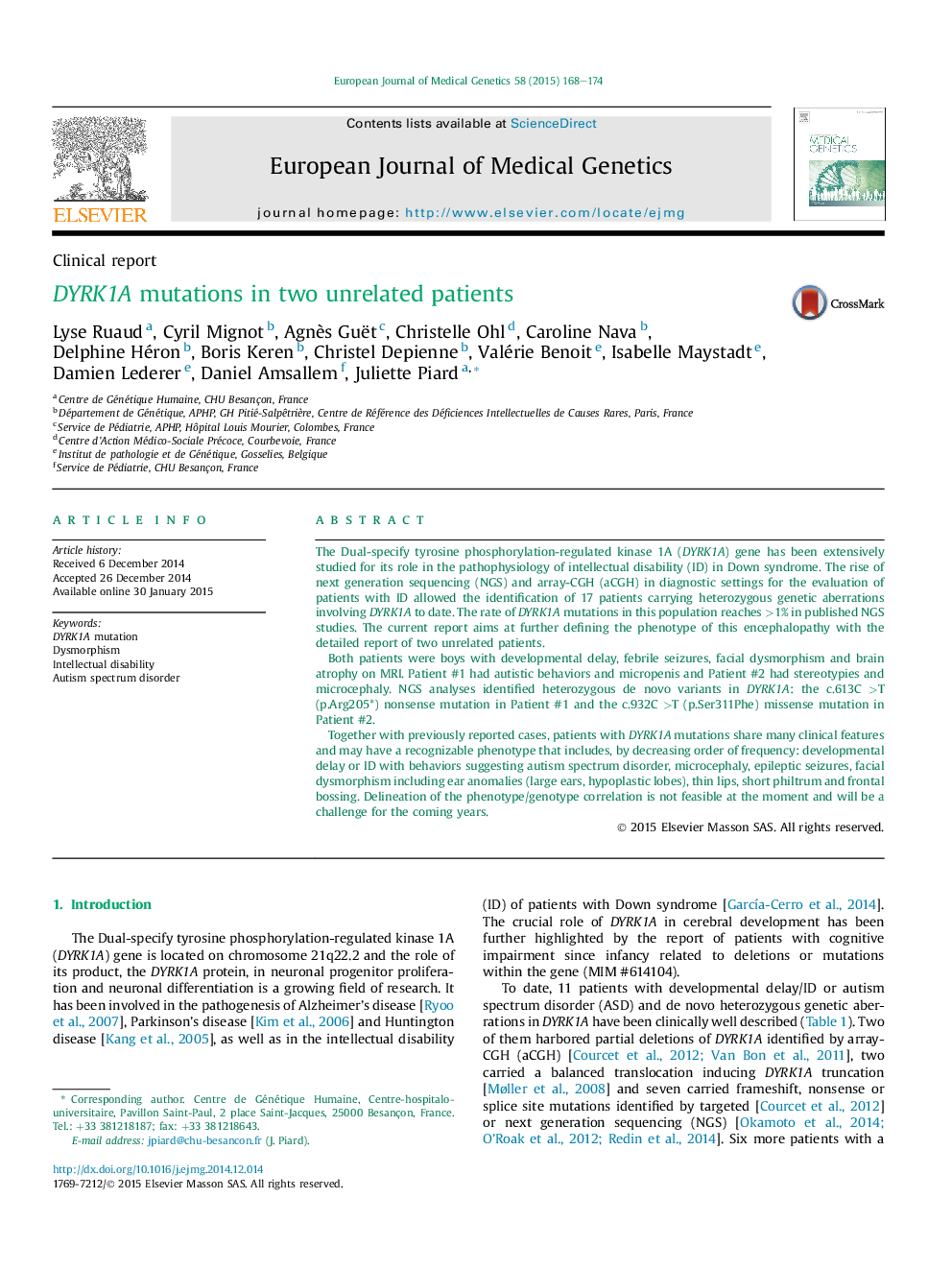| Article ID | Journal | Published Year | Pages | File Type |
|---|---|---|---|---|
| 2813879 | European Journal of Medical Genetics | 2015 | 7 Pages |
The Dual-specify tyrosine phosphorylation-regulated kinase 1A (DYRK1A) gene has been extensively studied for its role in the pathophysiology of intellectual disability (ID) in Down syndrome. The rise of next generation sequencing (NGS) and array-CGH (aCGH) in diagnostic settings for the evaluation of patients with ID allowed the identification of 17 patients carrying heterozygous genetic aberrations involving DYRK1A to date. The rate of DYRK1A mutations in this population reaches >1% in published NGS studies. The current report aims at further defining the phenotype of this encephalopathy with the detailed report of two unrelated patients.Both patients were boys with developmental delay, febrile seizures, facial dysmorphism and brain atrophy on MRI. Patient #1 had autistic behaviors and micropenis and Patient #2 had stereotypies and microcephaly. NGS analyses identified heterozygous de novo variants in DYRK1A: the c.613C >T (p.Arg205*) nonsense mutation in Patient #1 and the c.932C >T (p.Ser311Phe) missense mutation in Patient #2.Together with previously reported cases, patients with DYRK1A mutations share many clinical features and may have a recognizable phenotype that includes, by decreasing order of frequency: developmental delay or ID with behaviors suggesting autism spectrum disorder, microcephaly, epileptic seizures, facial dysmorphism including ear anomalies (large ears, hypoplastic lobes), thin lips, short philtrum and frontal bossing. Delineation of the phenotype/genotype correlation is not feasible at the moment and will be a challenge for the coming years.
